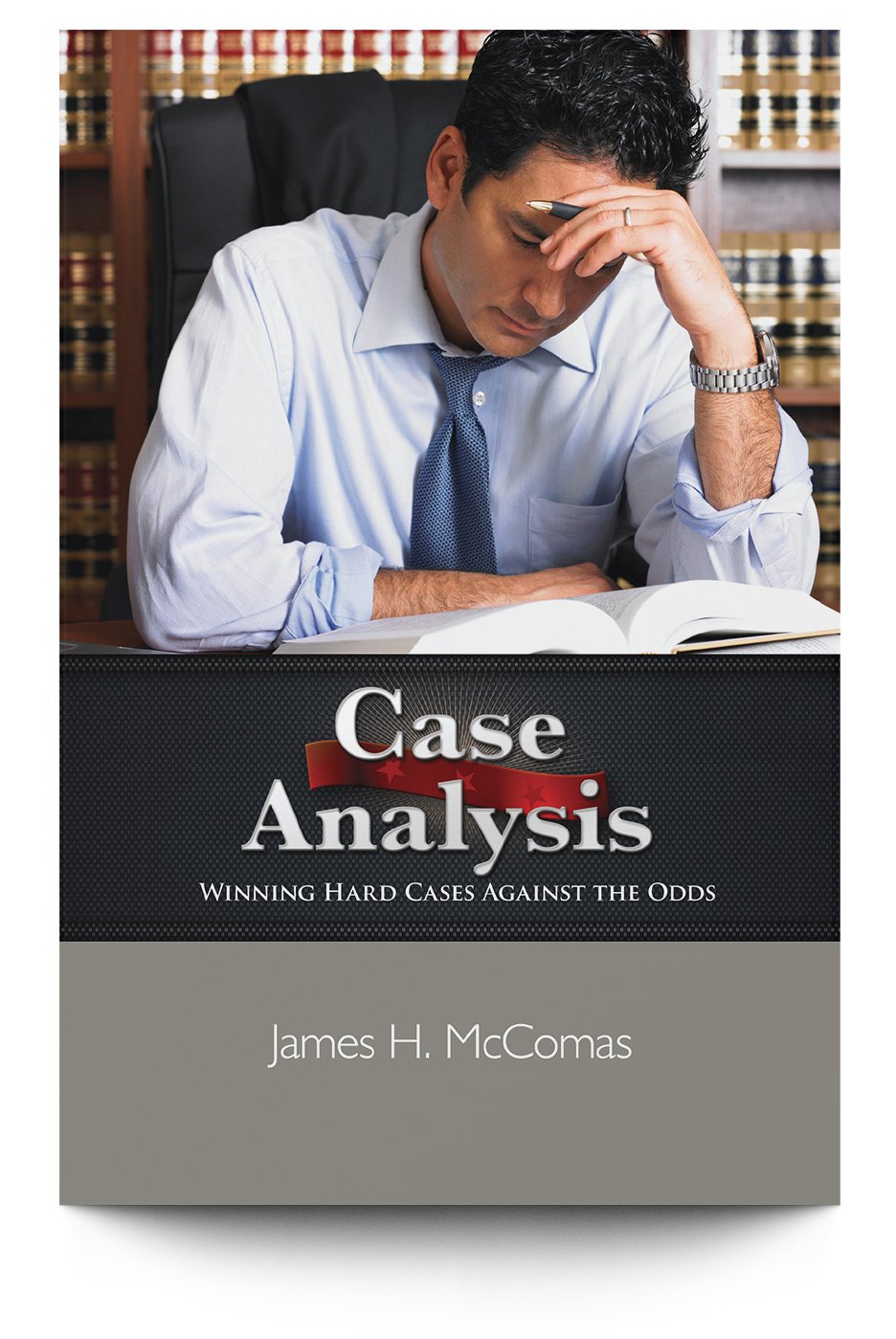Book Review of Case Analysis by Jonathan Rapping in the Champion (April 2012)
Cases are won and lost long before trials begin. A lawyer begins earning a not guilty verdict the moment the lawyer takes the case. The ability to perform well is intricately connected to the process of Case Analysis. It is an art that author James McComas honed as a public defender. Through this book, he passes this critical methodology on to each reader.
Far too often, the quality of a lawyer is measured by the lawyer’s ability to very quickly identify winning cases and to effectively "shoot from the hip" in the courtroom. Some defenders brag that they can differentiate winning cases from losers simply by reading the police report, viewing this as a positive skill nurtured through experience. Others have boasted of being able to pick up a file and try the case the next day, as if this "ability" is the hallmark of a true trial jock. However, assessing the likelihood of success without putting in the work required to accurately make that prediction, and overreliance on the degree to which true trial skill is responsible for winning cases, impeded many of us from maximizing our changes of success.
In Case Analysis, James McComas warns against thinking like a lawyer and urges us to remember that our clients’ fates lie in the hands of jurors. Jurors are laypeople who employ common sense shaped by the world around them. Jurors are moved by facts and feelings, not by law. When we understand this lesson, we can begin to identify those facts and perceptions that most move jurors. Our ability to identify these “outcomes levers,” as McComas calls them, is the first step towards a successful trial strategy. They are often not immediately apparent in the always lacking narrative of the police reports. We must discover them through investigation, discovery, and pretrial litigation. Our ability to analyze how these outcome levers will impact juror is the next step, essential to incorporating them into the most viable defense theory. The ability to maximize the impact of these outcome levers that support the theory of innocence — and to minimize those that help the opponent — is the final step. McComas teaches that this is done through motions strategy, voir dire, opening statements, cross-examinations, direct examination, jury instructions, and closing arguments.
The Case Analysis method depends on trial preparation for its success. It teaches that the best trial lawyers must also be wonderful investigators, must excel at pretrial litigation, and must develop a creative and aggressive discovery practice. The lawyer who files boilerplate motions, engages in routine discovery, relies solely on standard jury instructions, or fails to direct the investigative process will miss opportunities to identify and develop outcome levers. When the lawyer who excels in all preparation and trial areas applies the Case Analysis method, the lawyer’s power to move a jury is unparalleled.
McComas came to understand these lessons early in his career as a public defender. He passed these lessons down to the lawyers he trained. This book will change the way a lawyer approaches representation. McComas reminds us that we can be outspent, but never outworked or outthought. He gives us a process through which we can find a way to win that hard case.
Reproduced by permission. ©2012 the Champion (April 2012) All rights reserved.

